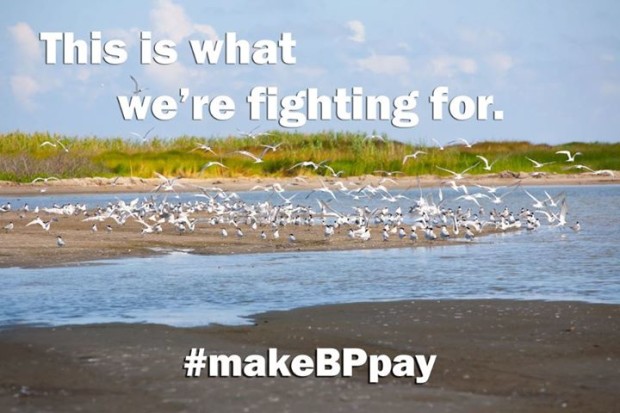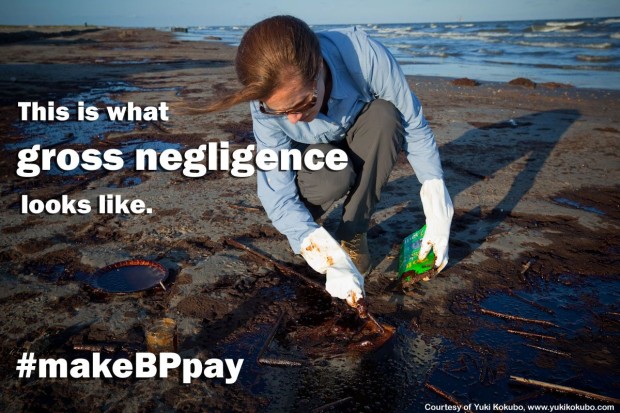We have much more to do and your continued support is needed now more than ever.
The Public Has Spoken: Gulf Ecosystem Restoration Is National Economic Restoration
July 8th marked the end of a public comment period for the Gulf Ecosystem Restoration Council’s Draft Plan. National Wildlife Federation and Environmental Defense Fund’s members submitted an astounding 37, 076 comments to the Gulf Ecosystem Restoration Council, saying that they expect this money to be dedicated solely to environmental restoration. So thank you to everyone for speaking up for people and wildlife in the Gulf! Your voice counts and we appreciate all your efforts! In the words of notable scholar Ryan Lochte, “Jeah!!!”
Because of this robust public support we are one step closer to having a plan that specifies how the money received from the 2010 BP oil disaster will be allocated in the Gulf States for ecosystem restoration projects. This is another huge step toward restoring this fragile ecosystem, and ensuring that generations can enjoy a healthy Gulf for years to come.
Now I know that we’ve been taking about the travesty that occurred in the Gulf of Mexico for three years. But for three long years people and wildlife in the Gulf have been suffering. In fact, more than 800 dolphins have been stranded since the Gulf Oil disaster began — to put that in perspective a normal rate would be fewer than 200.
NWF, along with our partners in the Mississippi River Delta Coalition have been there every step of the way, covering the Deepwater Horizon explosion, helping with the cleanup efforts, bolstering Department of Justice to hold BP fully accountable for their gross negligence, and working with members of congress to ensure that the Gulf States receive the necessary funding to restore the ecosystems decimated by the 2010 oil spill.
Here’s the Story from A to Z
Below is a recap about what has been done to date to rectify the disaster in the Gulf.
April 20, 2010: Deepwater Horizon explodes spewing crude oil into the Gulf of Mexico.
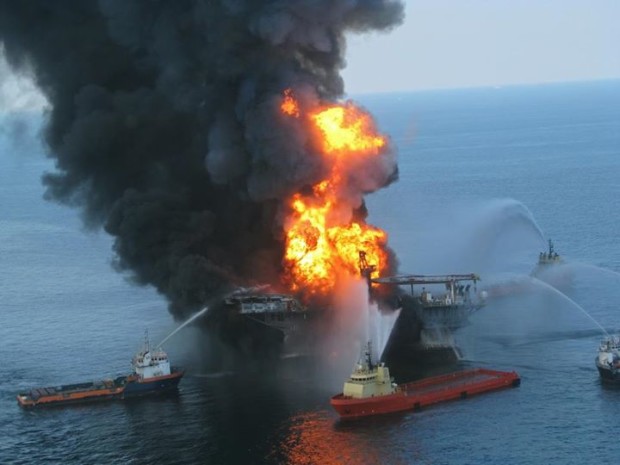
May 2010: The Mississippi River Delta Coalition and our partners on the ground in the Gulf of Mexico begin cleanup and restoration efforts.
July 15, 2010: The Macondo well is capped after releasing 4.9 million barrels, killing wildlife and hampering the livelihoods of people in the Gulf.
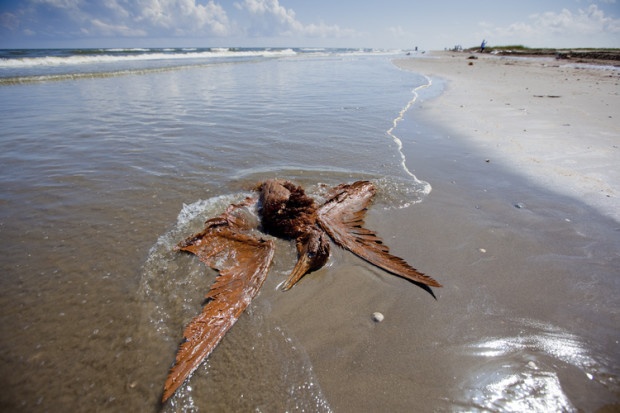
2011: NWF and our partners in the Mississippi River Delta Coalition worked tirelessly with state, congressional, and federal policy makers to craft legislation that would provide funding to restore the Gulf coast. We brought numerous constituents from all sectors (ranging from local businesses, sportsmen, tourism industry, and environmentalists) to Washington, DC to meet with members of Congress and impress upon them the importance of restoring the gulf ecosystems. We also had our staff on the ground in the Gulf States educating them about the impacts of the BP oil spill.
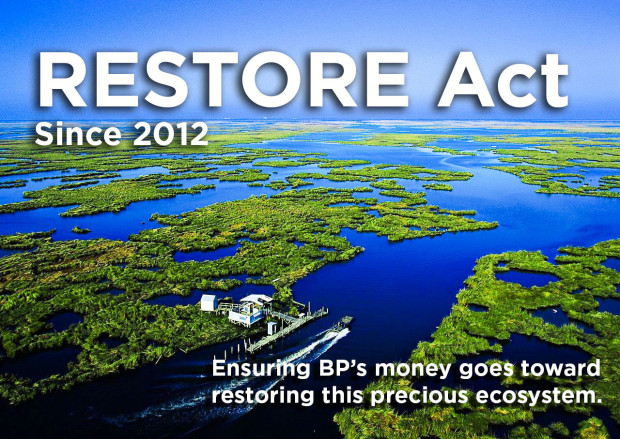
July 6, 2012: The Resources and Ecosystem Sustainability, Tourist Opportunities and Revived Economies Act (RESTORE Act) signed into law, dedicating 80 percent of all Clean Water Act penalties paid by BP and other responsible parties for the 2010 oil spill.
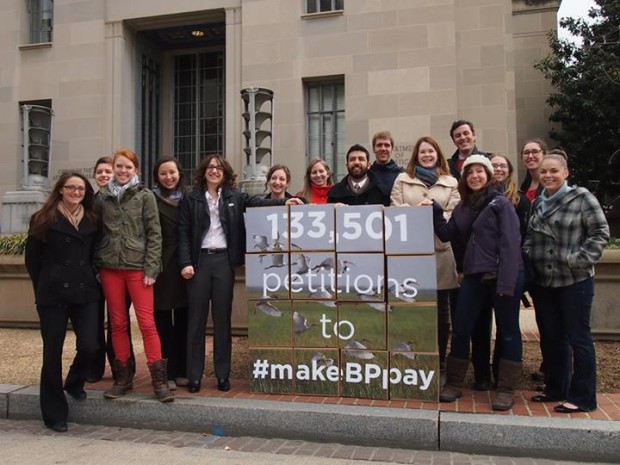
February 13, 2012: The Mississippi River Delta’s followers submitted 133,501 petitions to the Department of Justice encouraging them to hold BP and all responsible parties fully accountable for their gross negligence during the 2010 oil spill.

February 25, 2013: The civil trial to hold BP accountable for the 2010 oil spill starts in New Orleans, Louisiana. The Mississippi River Delta Coalition and partners held a rally in front of the courthouse to support the Department of Justice holding BP fully accountable for their gross negligence.
May 23, 2013: The Gulf Ecosystem Restoration Council (established in the RESTORE Act) releases its Draft Initial Comprehensive Plan: Restoring the Gulf Coast’s Ecosystem and Economy. The Draft Plan establishes overarching restoration goals for the Gulf Coast region; provides details about how the Council will solicit, evaluate, and fund projects and programs for ecosystem restoration in the Gulf Coast region; outlines the process for the development, review, and approval of State Expenditure Plans; and highlights the Council’s next steps. Once the report was released the public was afforded the opportunity to comment on the plan and to help ensure that the money allocated by the Council will go toward ecosystem restoration projects.
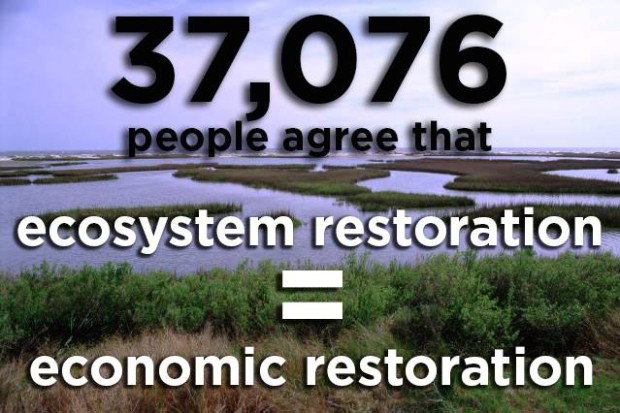
July 8, 2013: The public Comment period closes for the Draft Plan. At the close of this 30 day comment period thousands of comments had been submitted with over 37,000 specifically about directing funds toward environmental restoration in the Gulf.
Next steps: the council will finalize a restoration plan in the coming weeks, the BP trial will be settled, and the money from the BP civil trial will go toward the Gulf States to implement restoration projects.
